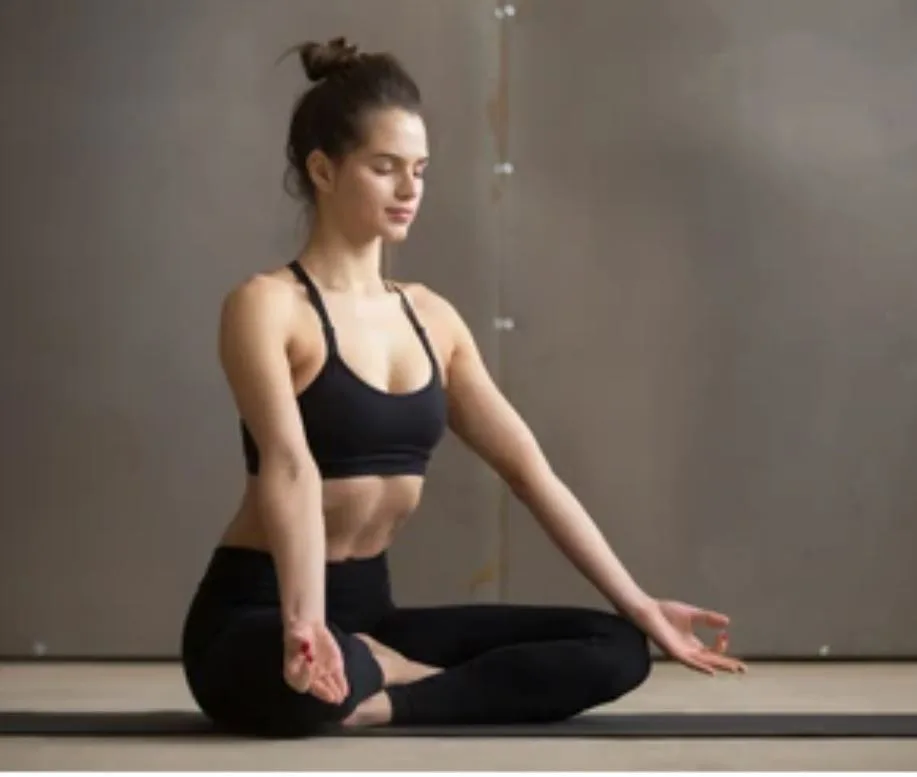
Table of Contents
Anxiety and stress are a regular part of our busy lives. It is possible to overcome these irritants, however, they have the potential to seriously damage both your physical and emotional health if left unchecked. Practicing yoga is an approach to de-stress and clear your thoughts. In yoga, deep breathing exercises, (sometimes known as prana and sukh kriya) are particularly useful in treating mental and physical ailments.
It has been shown that deep breathing exercises – which can last anywhere from five to twenty minutes – are beneficial. Anger, hostility, anxiety and depression can all be alleviated by them. Both those with mental health problems and those in generally good health can attest to this.
Therefore, spending a few minutes practicing deep breathing techniques can help reduce stress and anxiety. Dr. Ishan Sivananda, mental health researcher and founder of Yoga of Immortals.
These seven Deep breathing techniques to help you achieve peace and calm.
Rechak Kriya (Prolonged Exhalation Technique)
“Laxative” means expiration or release of air in Sanskrit. Rechak Pranayama promotes relaxation and purification through conscious, controlled breathing. Focusing on breathing increases feelings of well-being, calms the nervous system, and reduces physical and emotional stress.
Laxative action helps increase oxygen exchange, increase lung capacity, and balance the prana or life force energy flow in the body.
Kapalbhati (Skull-Shining Breath)

The name “Kapalbhati” is formed by combining two Sanskrit words – “Kapal”, which means skull, and “Bhati”, which means bright or shining. Therefore, Kapalbhati is sometimes translated as the cranial glowing breath or the process of clearing the forebrain. Kapalbhati, characterized by vigorous deep breathing and passive inhales, improves oxygen delivery to the brain.
This dynamic deep breathing method emphasizes forceful abdominal contractions to expel air from the lungs while using rapid, rhythmic deep breathing. Thus, it improves mental clarity, eases digestion and reduces anxiety and stress levels.
Nadi Shodhana Pranayam (Alternate Nostril Breathing)
“Nadi” means energy channel and “Shodhan” means cleanliness or purification in Sanskrit. Nadi Shodhana means “nerve purification” or “vessel purification.” The energy channels of the body are balanced using this nostril breathing method. Harmony and balance are developed in the individual through this exercise, which alternates breathing between the left and right nostrils and teaches precise hand movements to control the flow of air. Nadi Shodhana promotes general well-being by reducing stress, promoting mental peace and improving respiratory health.
Tribandh Pranayam (Three-Part Breath)

The idea of “tribandha” is to activate the three primary energy seals or locks in the body. Stability, breath control and a strong bond between body and mind are all provided by it.
- Moola Bandha, also known as “root lock,” is a pelvic floor exercise that involves lifting and retracting the muscles in the perineum between the anus and genitalia.
- The abdominal muscles, especially the transverse abdominis, are involved in Udiyana Bandha (to draw the abdominal cavity towards the spine and upwards.
- Jalandhar Bandha, commonly known as the “throat lock”, involves lowering the chin towards the chest. This activates the neck muscles and creates a slight pressure in the throat.
Tribandha, also known as three bands, controls breathing, strengthens the core, and enhances consciousness while regulating prana flow.
Bhastrika Pranayam (Bellows Breath)
Bhastrika is a dynamic method of breathing in which the breath is drawn in and forcefully exhaled. In Sanskrit, the word “bhastrika” means “bellows”, which pumps air vigorously. Similarly, in Bhastrika Pranayama the breathing is imitated like a forceful movement of the bellows. It opens up the nasal passages, increases vigor and increases lung capacity. It reduces congestion, improves digestion and reduces mental fatigue.
Agnisar Kriya (Fire Cleansing Technique)
“Agni” means fire and “Saar” means essence or core. These two words combine to form the word “Agnisar”. Agnisara Pranayama focuses on rhythmically contracting and relaxing the abdominal muscles to activate the digestive system and improve metabolism. This stimulates digestion. It promotes general well-being by increasing energy, stimulating detoxification and restoring balance to the nervous system.
Surya Bhedana and Chandra Bhedana
Practitioners of Surya Bhedana and Moon Bhedana breathe through specific nostrils to balance the energies of the Sun and the Moon. Breathing through the right nostril (Surya Bhedana) invigorates the body and improves mental concentration, while breathing through the left nostril (Chandra Bhedana) brings inner peace and relaxation. Both exercises strengthen the respiratory system and restore balance to the nervous system.
also read: Supercharge Your Day: 15 Explosive Micro Workouts for Transformative Impact

